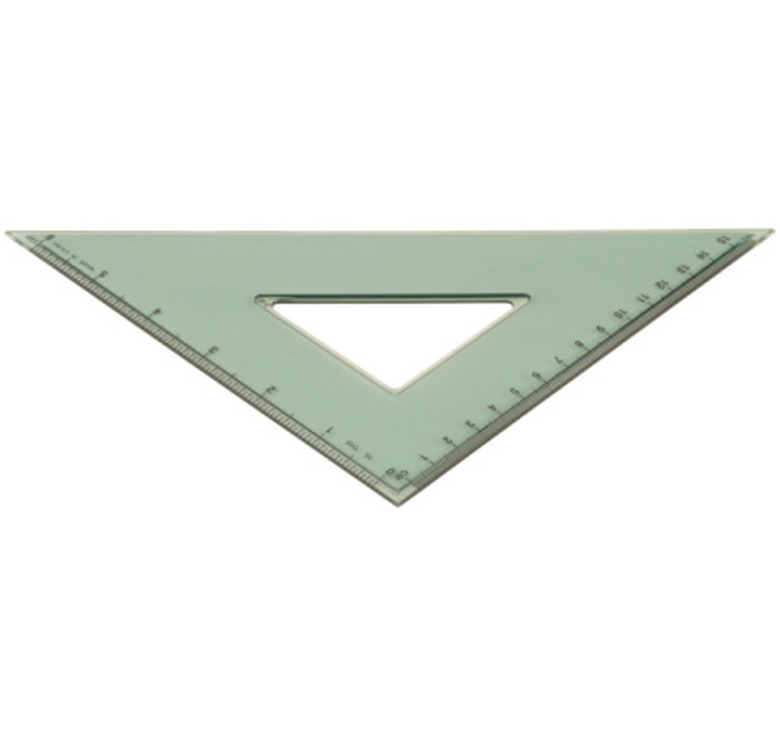Characteristics Of A Right Triangle
All right triangles have 90-degree, or right angles. They are used in math for special calculations, including finding the exact distance between two points. Right triangles can also help you find heights and distances that are very large or otherwise hard to measure. Right triangles have many special properties that are the basis of trigonometry.
Anatomy of a Right Triangle
Anatomy of a Right Triangle
The two shorter sides of a right angle are called legs. They are usually labeled with the letters "a" and "b." The third side, which is opposite the 90-degree angle, is called the hypotenuse and is usually labeled "c."
Pythagorean Theorem
Pythagorean Theorem
The Pythagorean theorem states that the sum of each of a right triangle's leg lengths squared is equal to the length of the hypotenuse squared. In other words, a^2 + b^2 = c^2, where "a" and "b" are legs and "c" is the hypotenuse. If you know any two sides of a right triangle, the theorem can be applied to find the third side. This is used in many cases to find hard to measure distances or lengths. For example, if you know you drive 10 blocks south, then 6 blocks east to get from home to the store, but you want to know what the direct distance between home and the store is. You could set up 10^2 + 6^2 = (the direct distance)^2 to find that it is about 12 blocks as the crow flies.
45-45-90 Triangles
45-45-90 Triangles
One of the special right triangles is the 45-45-90 triangle. It is formed by drawing a diagonal line from one corner to the opposite corner of a square. It is the only right triangle where both of the legs measure the exact same length. Thus, it is the only type of right triangle that is also an isosceles triangle. The name 45-45-90 comes from the measures of its interior angles. There is the required 90-degree angle, and the smaller angles both measure 45 degrees. The legs and the hypotenuse always display a 1: √2 ratio. Thus, for this triangle you only need to know the length of one side to find the other two lengths. The lengths of the legs are equal, and the length of the hypotenuse equals the length of a leg times √2.
30-60-90 Triangles
30-60-90 Triangles
As with the 45-45-90 triangle, the 30-60-90 triangle gets its name because the interior angles measure 30, 60 and 90 degrees. This triangle is formed by cutting an equilateral triangle in half. The 30-60-90 triangle's sides also form a constant ratio of 1:√3: 2. The short leg is directly across from the 30-degree angle, and it always measures half the length of the hypotenuse, which is across from the 90-degree angle. The longer leg, which is across from the 60-degree angle, measures the length of the short leg times √3, or half the hypotenuse times √3. Thus, for this triangle you also only need to know the length of one side to find the lengths of the other two sides.
Cite This Article
MLA
Meeks, Jenna. "Characteristics Of A Right Triangle" sciencing.com, https://www.sciencing.com/characteristics-right-triangle-8458486/. 24 April 2017.
APA
Meeks, Jenna. (2017, April 24). Characteristics Of A Right Triangle. sciencing.com. Retrieved from https://www.sciencing.com/characteristics-right-triangle-8458486/
Chicago
Meeks, Jenna. Characteristics Of A Right Triangle last modified March 24, 2022. https://www.sciencing.com/characteristics-right-triangle-8458486/
